Latest News
Classic Cornish: The Pit Road
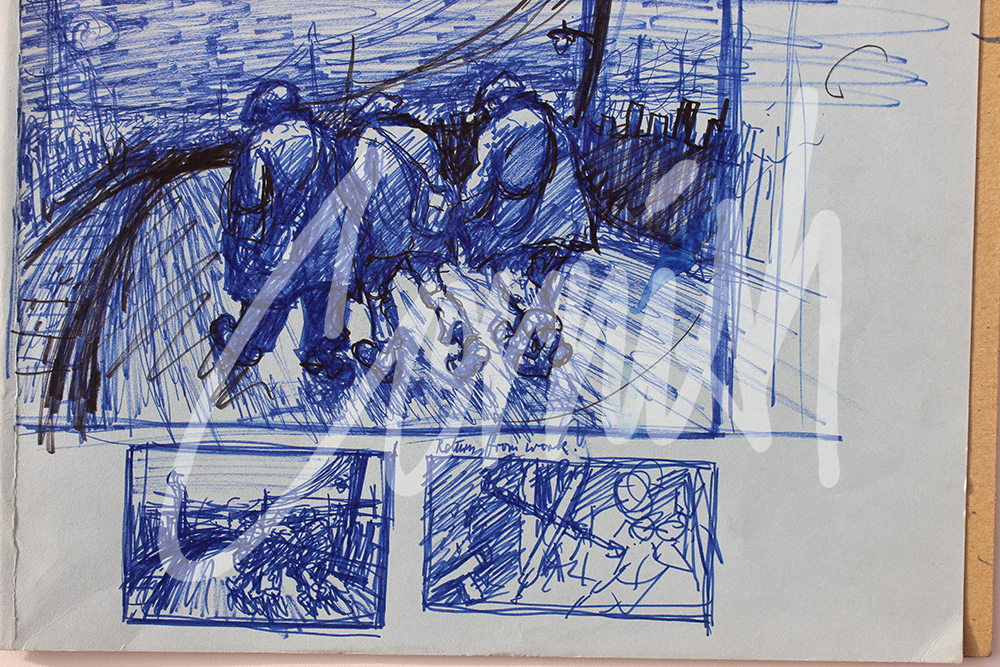
The Pit Road is perhaps Cornish’s most iconic image, often repeated, with numerous variations throughout his career. Cornish started work on Boxing Day 1933 and walked the pit road every day for the next 30 years. The journey began as he left the front door of his home at Bishops Close Street and continued immediately through the tunnel under the railway line and onward to the pit. It was a journey of three miles each way, which he travelled along with hundreds of other men, in all weather conditions, and at different times of the night and day. Within five miles of Dean and Chapter Colliery there were some 135 collieries at various stages of working, closing and re-opening. The impact of the environment was pervasive.
The pit road provided everything Cornish needed for inspiration:
“After walking along this road, winter and summer, it naturally becomes a significant part of one’s life. To watch the man ahead of you plodding resignedly through this man- made world is a subject which demands to be drawn again and again.”
The dip in the path, depicted in some versions of this subject, was caused by subsidence owing to underground workings shortly after Cornish started work in 1933. The painting is graphically accurate except for the colliery itself which he has moved to the right for reasons of pictorial composition.
Cornish found huge symbolism in the many shapes encountered on his three miles walk to work. He often said that the men were treated like slaves; telegraph poles along the route reminded him of crucifixes and on every one of them was a miner hanging crucified.
“One wonders with the passing of time, when no present-day pitheads actually exist, if pictures of them might one day be thought of as picturesque and as socially significant as old windmills.”
Behind the Scenes: The Norman Cornish Sketchbooks, contains a chapter which appraises Cornish’s work in the context of life in the Durham coalfield. There are 58 drawings and completed works showing the variations in this iconic image, along with carefully selected quotations which disclose his personal thoughts and the challenge of being caught between two very different cultures – coal production and aesthetics.
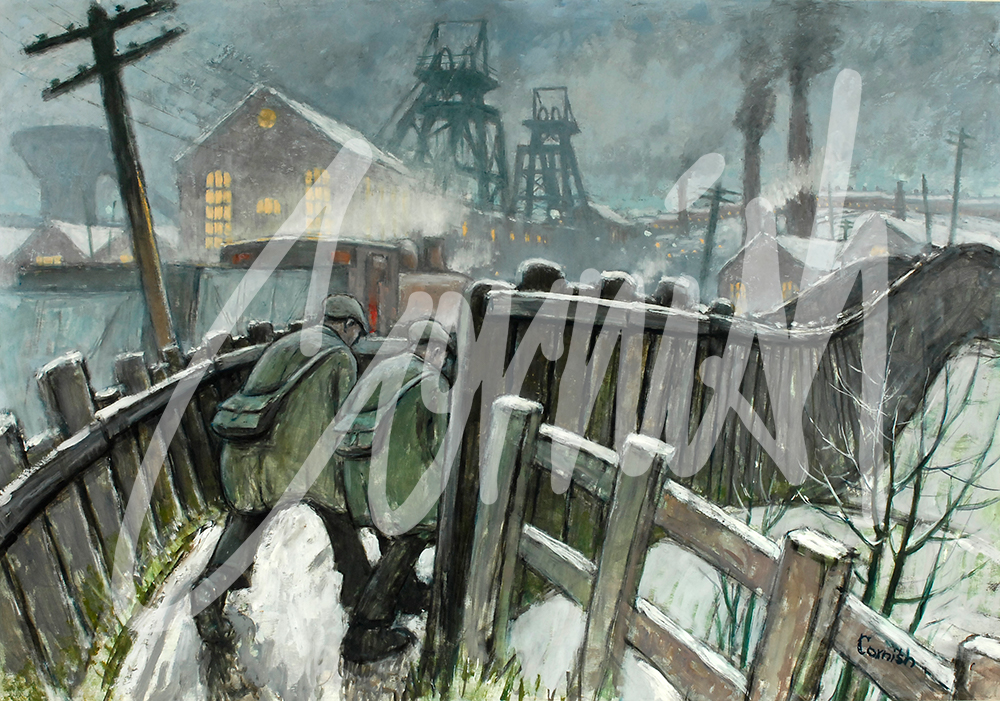
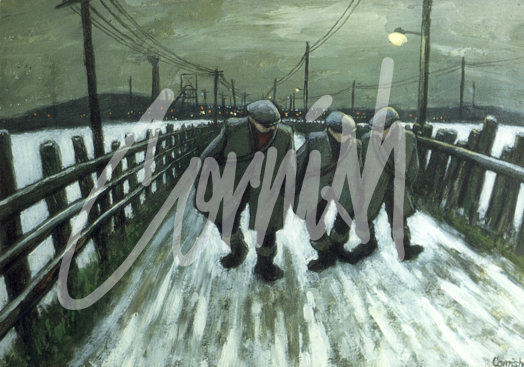

Man at Bar with Dog: A Masterclass in Art Appreciation
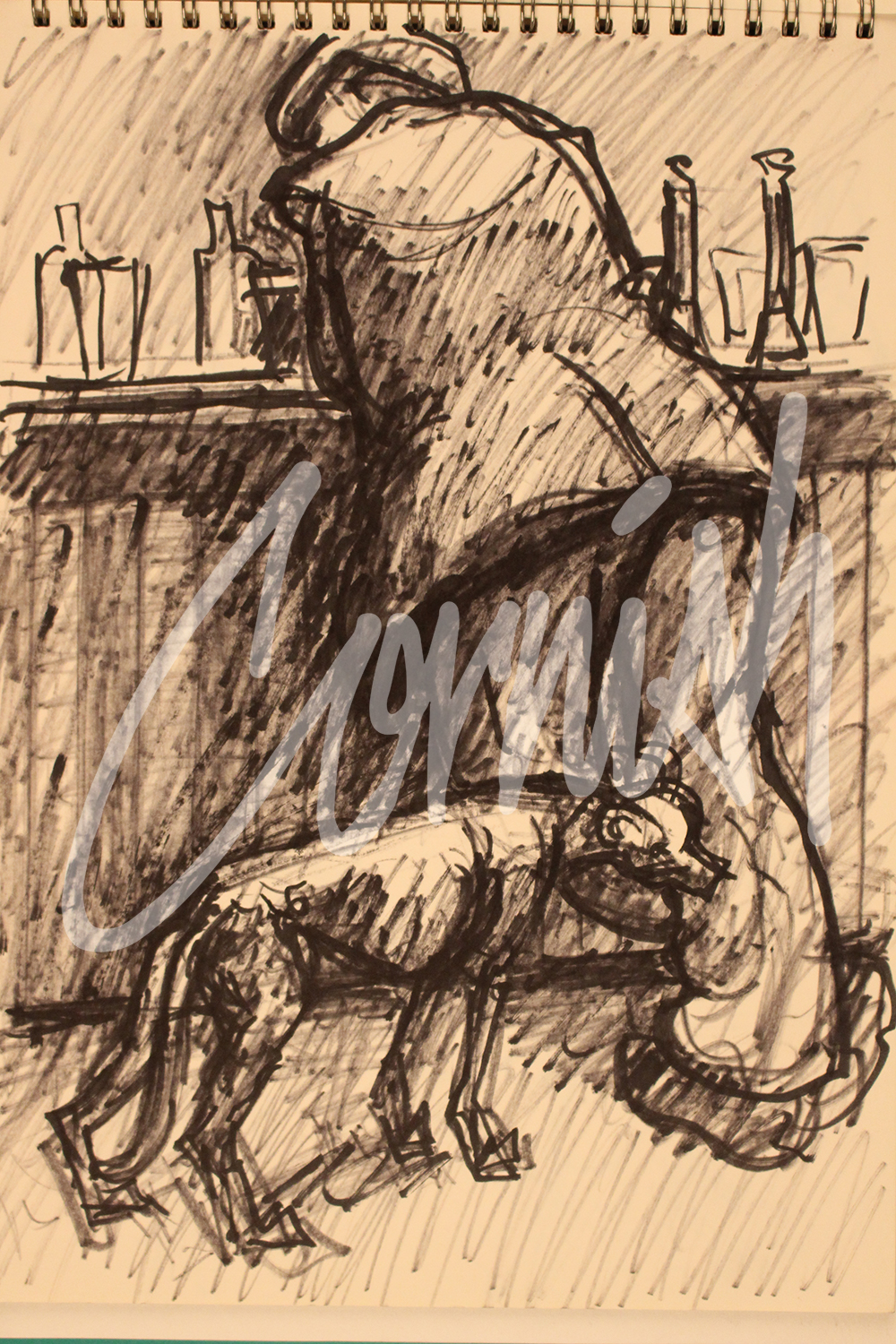
This picture had pride of place in the living room at Cornish’s home in Spennymoor. At first glance, this appears to be a relatively simple observation and design.
There were numerous versions completed throughout his career with minor adjustments to the position of the man at the bar, his arm on the bar, and various alignments of the dog’s head and legs. Constantly seeking the perfect composition almost became an obsession for Cornish. At Spennymoor Town Hall, Bob Abley Gallery, there is an hour long documentary (commissioned by Northumbria University many years ago) available to view. During the film, Cornish discusses his life and work with Richard Swallow who only manages four questions in an hour. However, in the visitors’ book, there is a delightful comment from someone who has enjoyed listening to Cornish talk about Man at Bar with Dog.
The visitor wrote: I have just listened to a master class in art appreciation.
Cornish in his own words:
This is more than a man and dog really because the composition is fitted very carefully within a rectangle and my feelings about it are put in that rectangle. First of all the dog and man, well they are both, to be blunt, animal life on this planet. The man is an animal and the dog is an animal too – and funnily enough, very similar, arms, legs, heart and chest. So how do I get that across? Well, I notice that the man is full of curvilinear shapes, and I find that if I start at the right hand side, the man’s coat and bottom of his trousers in a big curve come around it, continue and reverse and come along with the curve of the dog’s chest then down his leg to create a lovely curvilinear shape which is marrying the two figures together aesthetically. Also if you come from left side from halfway up the picture, the middle of the man’s leg is doing the same- which gives great strength. The right lower corner up the man’s shape to the top come to what we know as the golden section- this is a specially sensitive area which people have a feeling of rightness about and can be discussed. Then come straight down the picture and pass something very interesting-down the man’s leg and the dog’s two front legs. These are echoed with the two beer pumps. Not just a man and a dog but an arranged man and dog upon a theatre of operations, that’s how my pictures have been done.
The Man at Bar with Dog appears in many other bar scenes and throughout Cornish’s sketchbooks. Further examples can be found in
Behind The Scenes: The Norman Cornish Sketchbooks available on line at www.normancornish.com
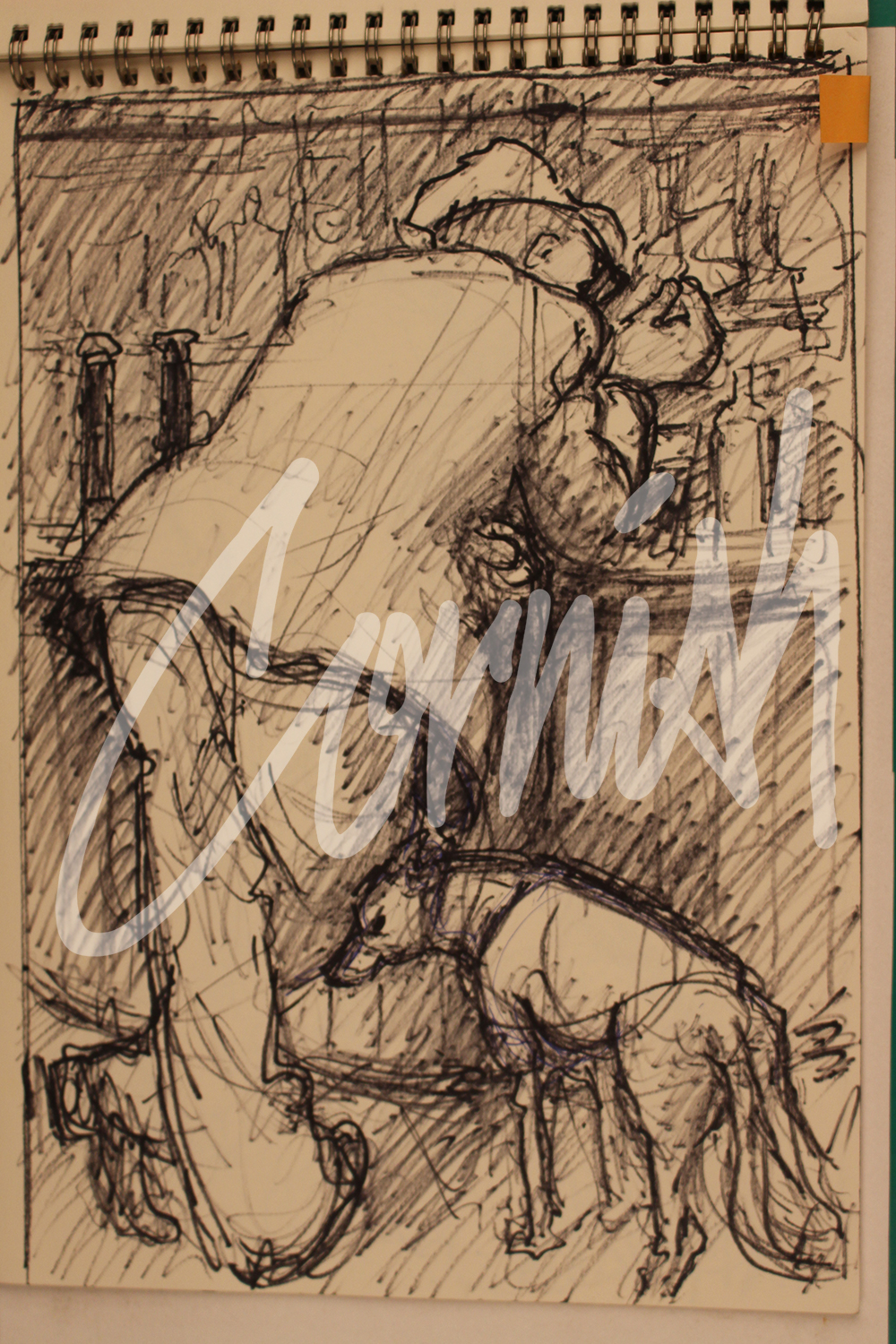
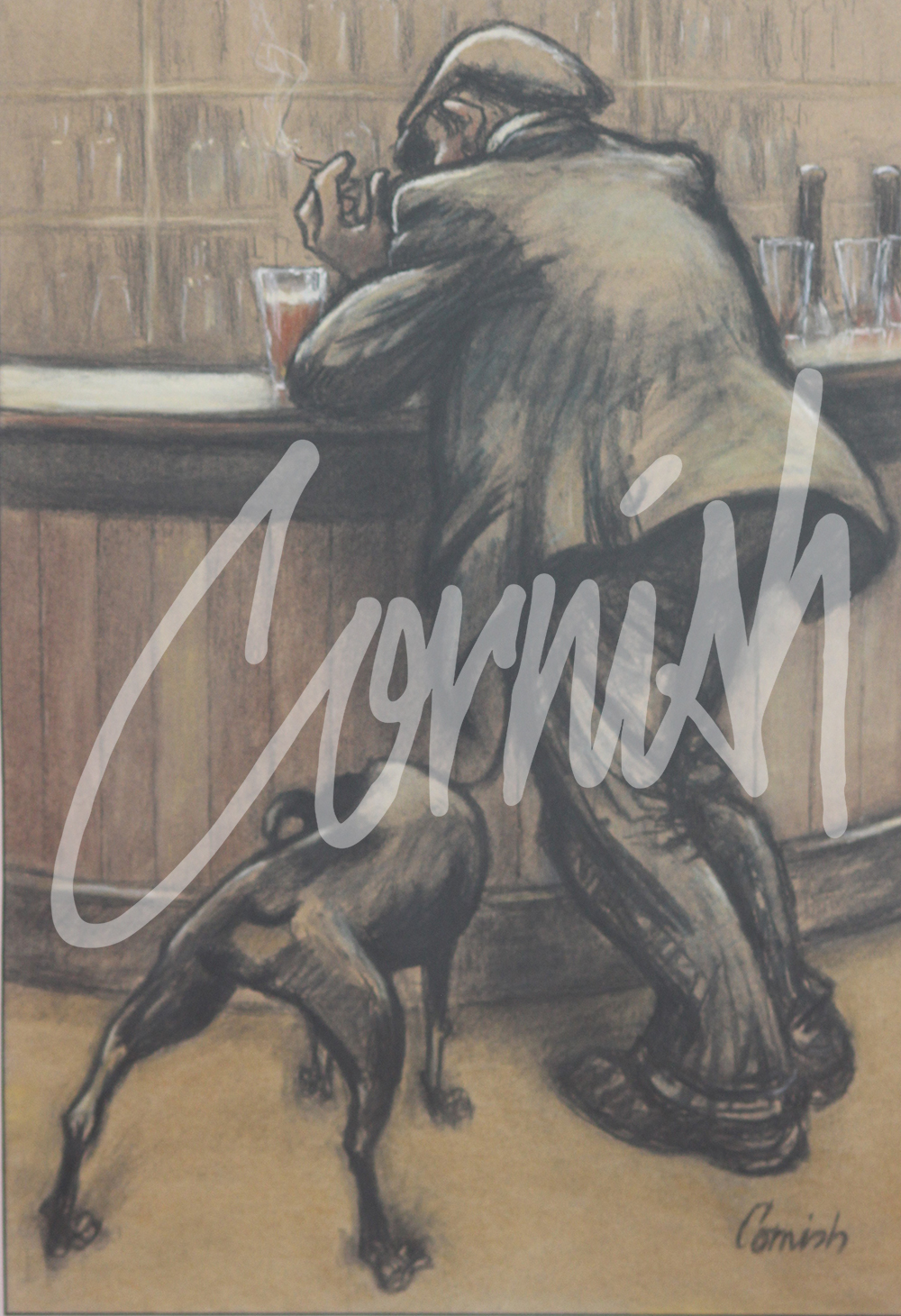
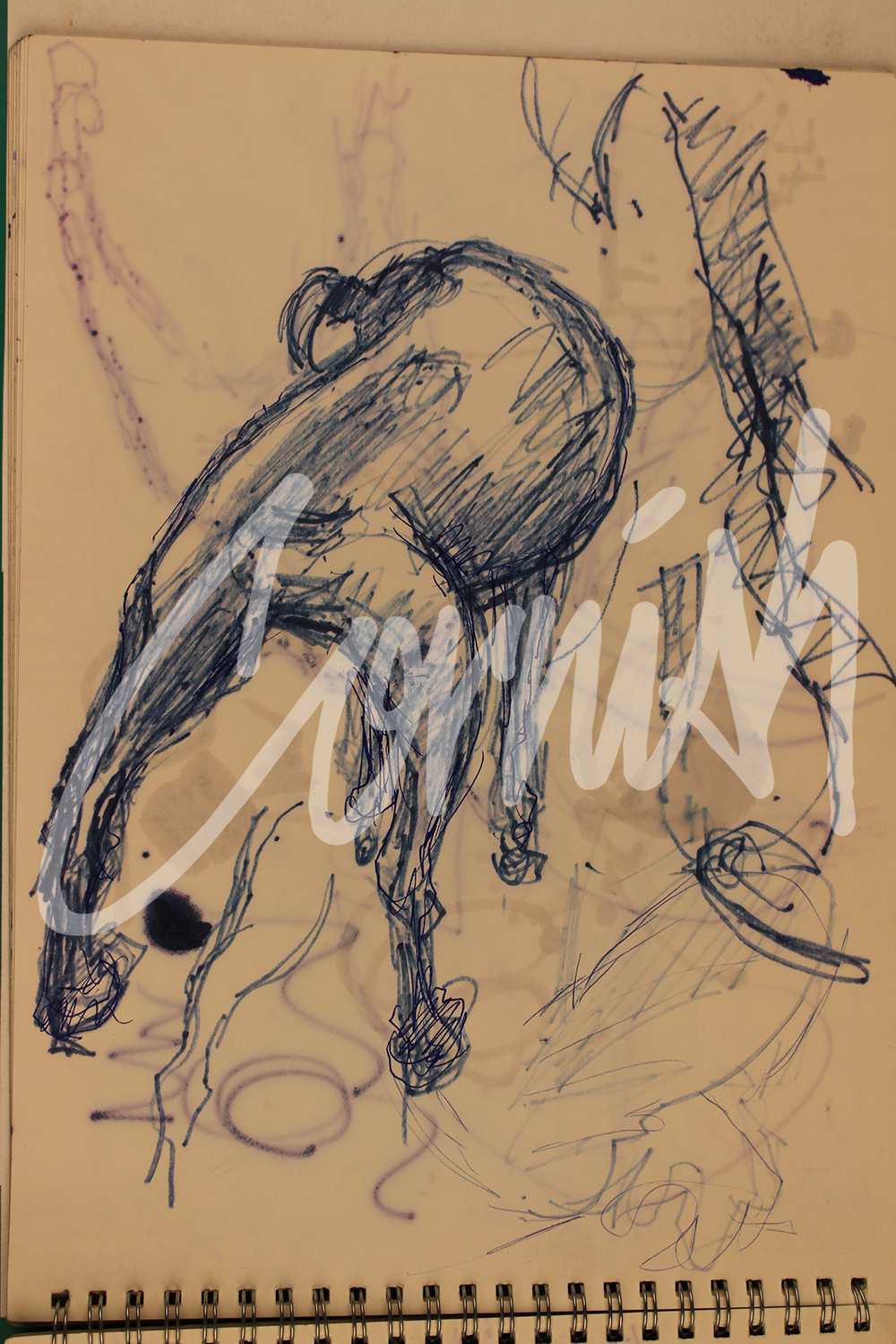
Classic Cornish: 2
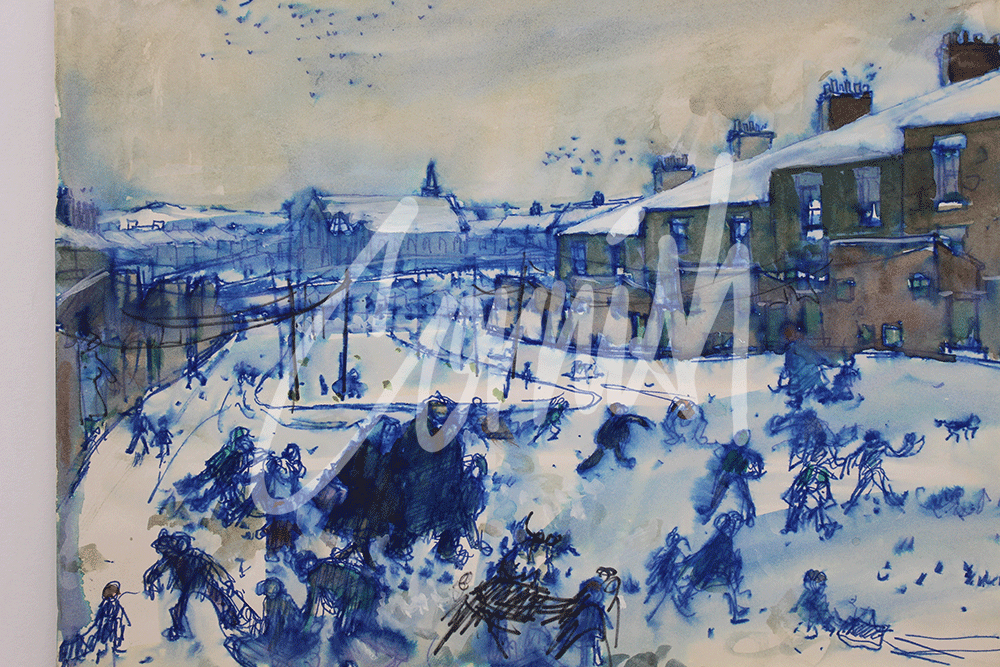
Mount Pleasant Kids in snow
Throughout his career Cornish painted many different street scenes in and around the Spennymoor area. He often re-visited the same location on different occasions and at different times of the year carefully recording people at work and play. This piece of work may be interpreted as a genre scene (an image of daily life) which allows great insight into the daily cultural landscape with pictorial representation in a variety of media.
One of Cornish’s other significant influences was Pieter Breugel the Elder (1525-1569) and this is evidenced in this scene which captures children at play in the snow and others going about their daily lives. This oil on canvas is a very carefully constructed composition which brings together so many elements, not least the 42 individual children and adults, carefully placed to appear to interact naturally. An excellent example of inspiration for Cornish from simple everyday activity.
The width of the back street has been expanded to lead the eye towards the Holy Innocents church which anchors the whole composition.
In his own words:
This picture has a lot of things I feel about it - kiddies playing in the snow for instance. The church crowns the whole thing and is symbolic of the whole area in a non-religious kind of feeling. Compositionally, take the roof of the row on the right and move left across the picture in a long diagonal- from one side to the other. If you look at the other side, another long diagonal, the two diagonals cross a rectangular theatre of operations. People playing echo the diagonal shapes. Look at the lady in the blue on the right echoing that shape, another diagonal. This is how I feel about it, for instance, the lady with the two little ones, one a bit bigger than the other. She has a hand reaching out and has obviously seen all of this activity with snow balls and she knows the little one is going to get hit, so she says: Bring that little one here. On the other side, these two are looking back into the picture which is interesting as it is part of the diagonal as well. In the main part, front right, are older boys playing snowball fights and the little dog excited and barking.
This painting and many other street scenes and related quotations, plus preparatory drawings can be enjoyed in Behind the Scenes: The Norman Cornish Sketchbooks. In addition, the book includes four academic essays and three other chapters examining in depth: Bar Scenes, Observations of People and Mining Scenes. Lavishly illustrated, copies may be purchased by visiting www.normancornish.com
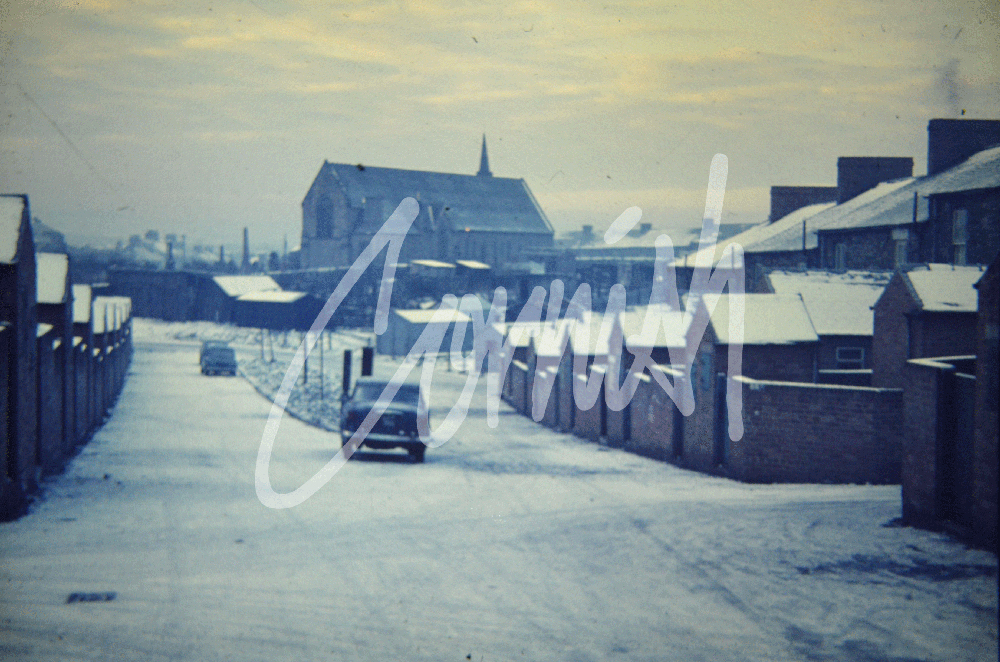
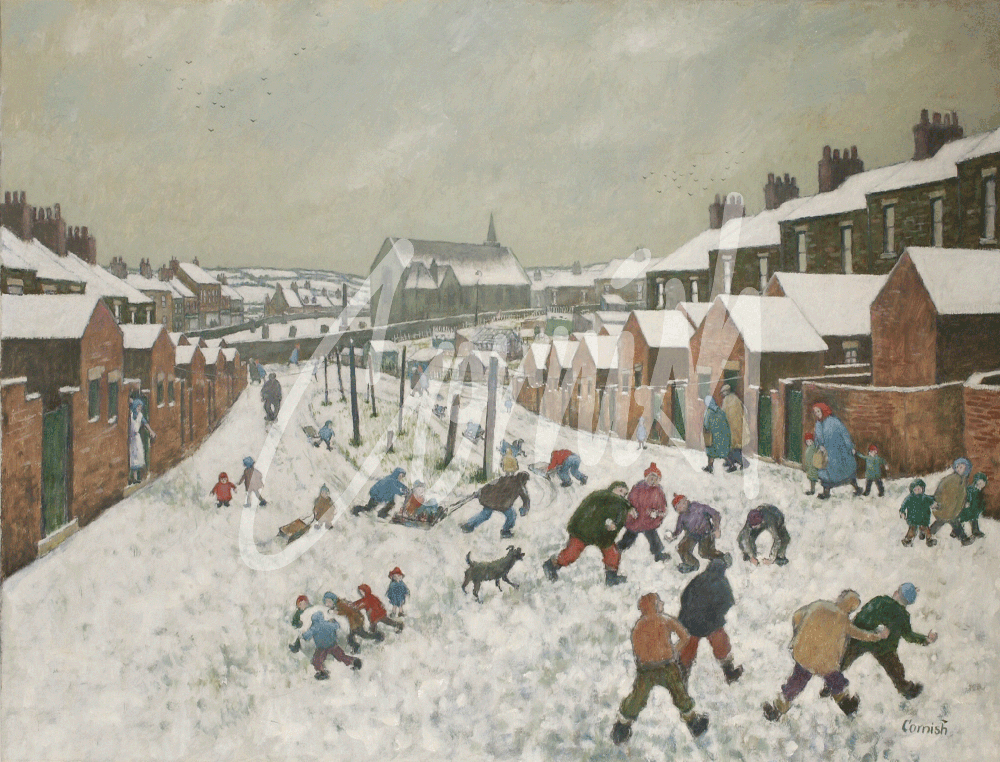
Classic Cornish: 1
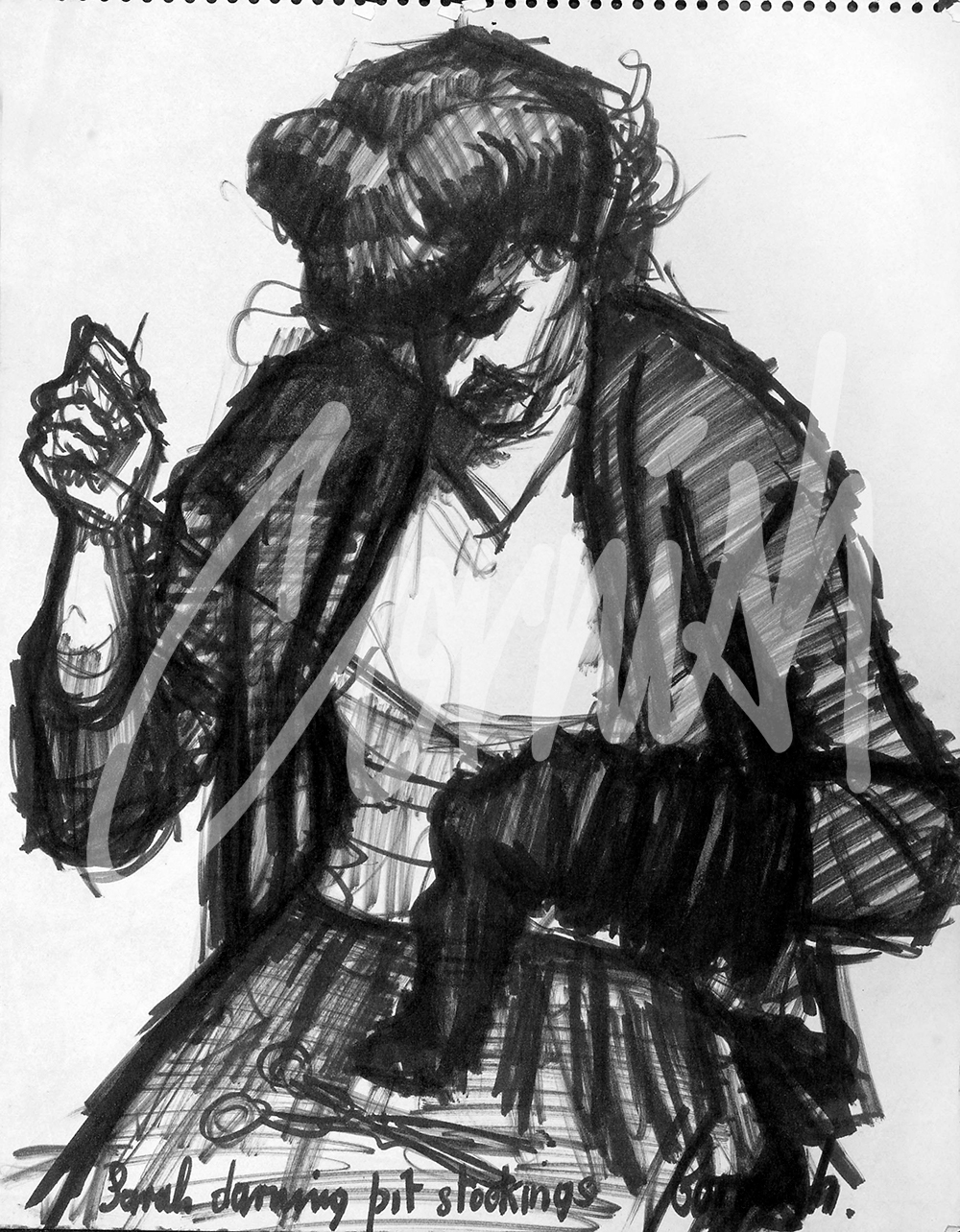
Cornish’s evocative paintings and drawings provide an unrivalled social record, chronicling an important era in English history. His observations of people and places are a window into a world which no longer exists outside but which Cornish has immortalised for us all with its struggle, its beauty, its squalor and its dignity.
In a recorded conversation during 2007, Cornish was asked if there were particular pieces of his work which he regarded as personal favourites. He suggested five examples, beginning with his studies of his wife Sarah, acknowledging the huge contribution she made to his success and loyal dedication to their family and home.
They met one weekend in 1944 at a dance at the Clarence Ballroom in Spennymoor and two years later the couple were married at Rose Street Methodist chapel in Trimdon Grange. The newly- weds lived in with Cornish’s paternal grandmother and conditions were far from ideal with an earth closet and no hot water. There was no room for Cornish to paint, although the Spennymoor Settlement was a short distance away. Norman and Sarah eventually moved to 33 Bishops Close Street in 1953 following several years of temporary accommodation.
Towards the end of his career in mining, Cornish suffered lower back problems; he was anxious about leaving the colliery and the relative security of a modest income and family home. Sarah insisted that if he didn’t put his notice in then she would! The move to 67 Whitworth Terrace soon followed in 1967 enabling Cornish to work in a suitable environment to develop as a professional artist.
Sarah Cornish provided the stability and continuing support essential for her husband to develop his career. Her quiet nature belied her inner strength, patience and calming demeanour which was essential for Cornish to concentrate on his work and future success. She was also the subject of many drawings and paintings throughout her life. Often while working and sometimes in more formal poses. ‘Don’t move’ and ‘hold it there’ became the signal to pose for Cornish in all sorts of fascinating domestic situations which would be typical of the experiences of so many women in this particular piece of social history.
“I many times drew and painted pictures of my wife Sarah, when she was busy with household chores, especially when she was knitting. I felt her prayer-like attitude gave the pose of sanctity and her knitting was her way of praying, really, doing her best to keep our home and children together. This portrait represents a pose which was typical of thousands of women who were heroines of the coalfield.”

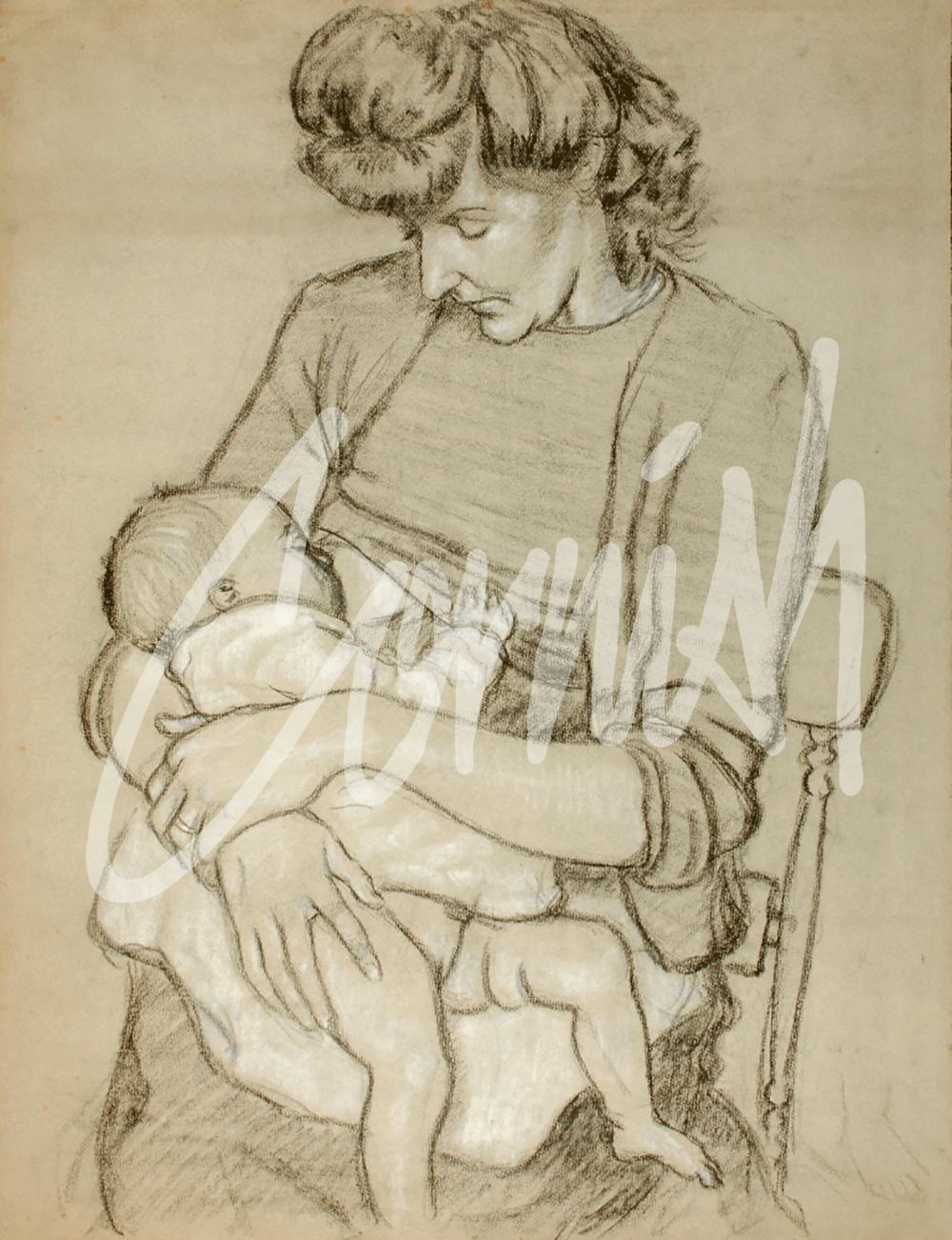
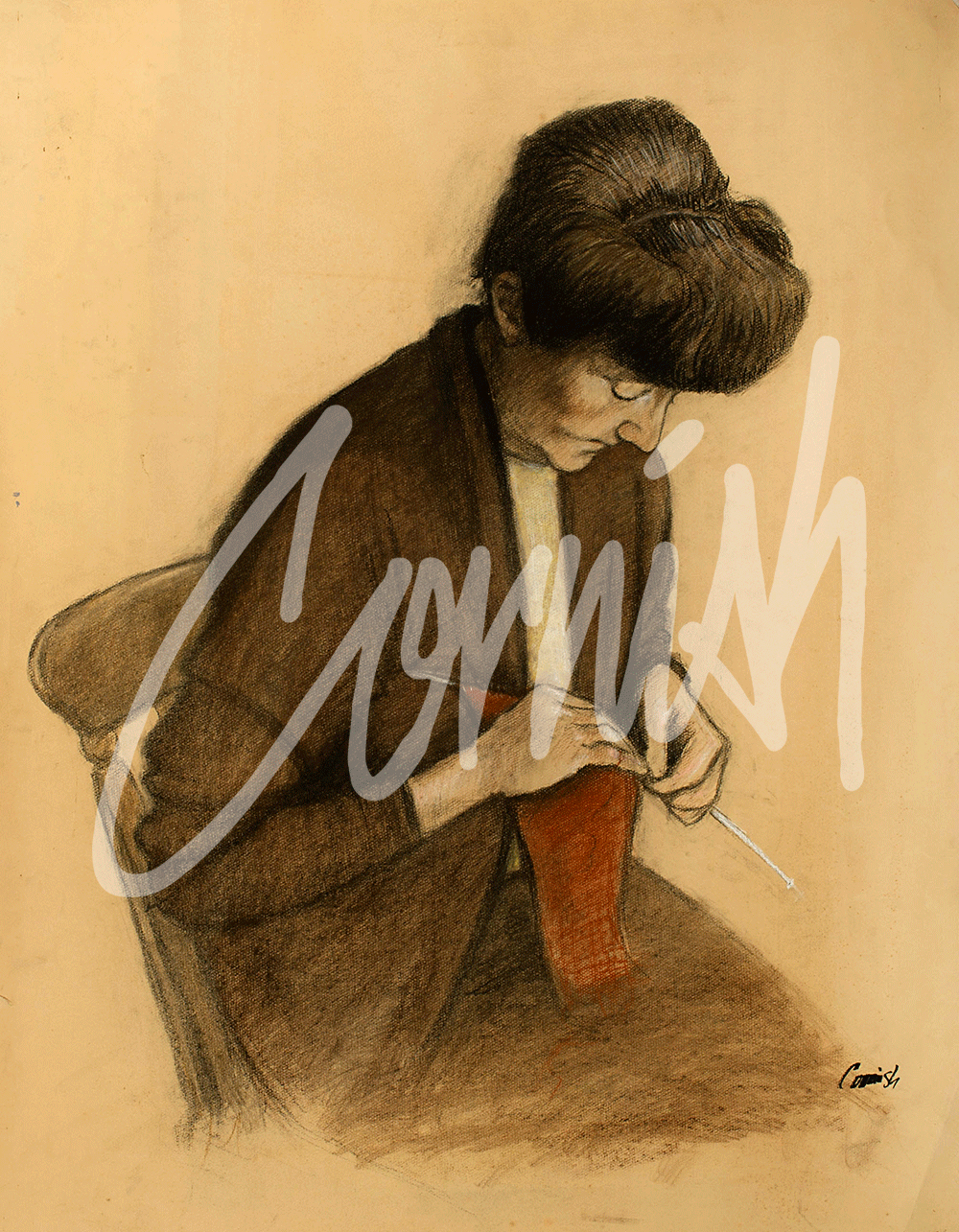
Norman Cornish 1991-2013 Part 2 Academic success and national acclaim
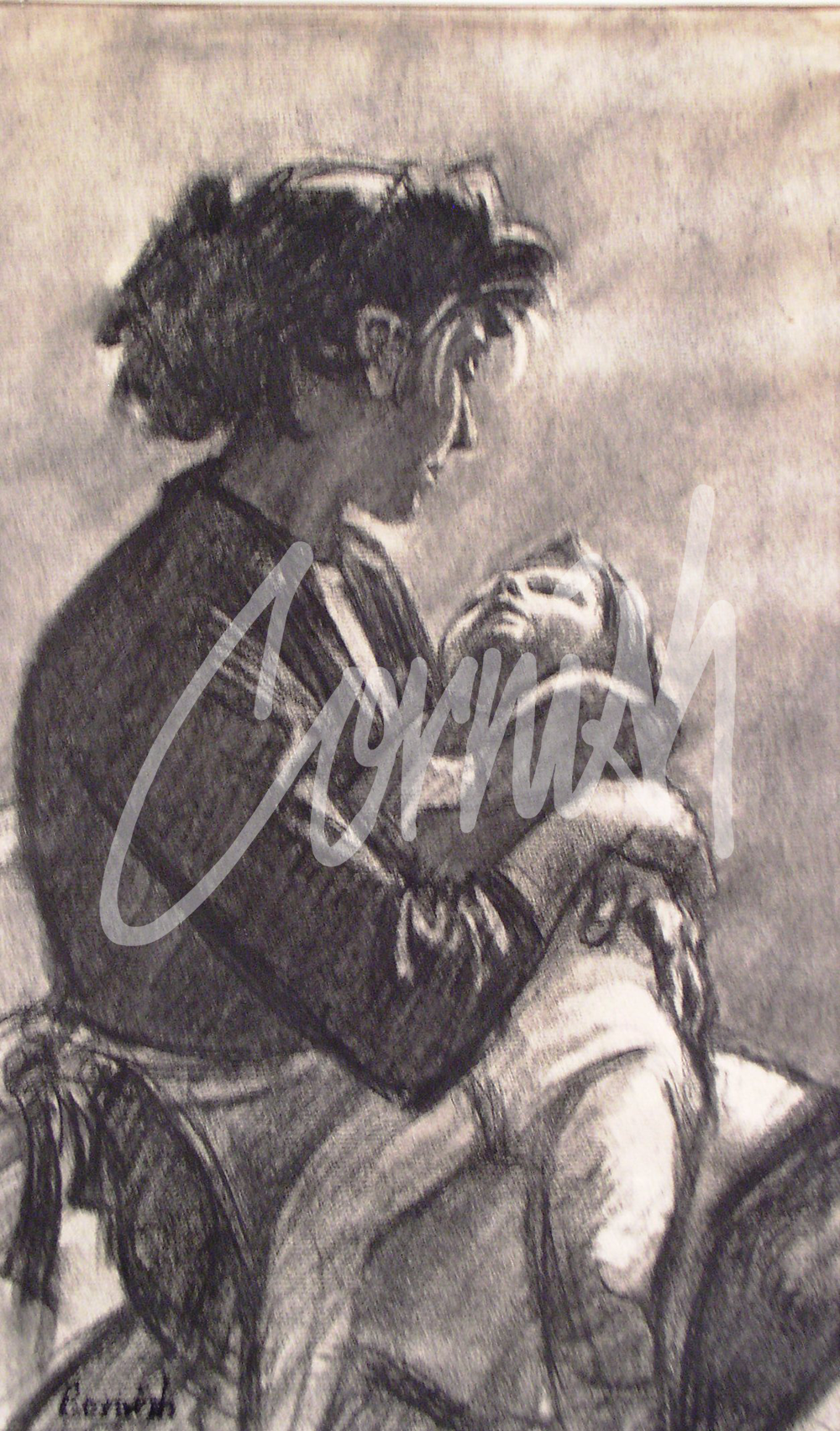
Norman Cornish academic recognition and widespread acclaim towards the end of an outstanding career.
More Articles...
- Norman Cornish 1991-2013 Part 1 Hanging on the walls
- Norman Cornish in the 80s
- The Port of Tyne Commission Part 2 The River Tyne Pageant:
- The Port of Tyne Commission Part 1: Roll-On Roll-Off
- The British Oxygen Commission
- The Matthew Ridley Commission
- Cornish In Paris
- Norman Cornish and Paul Cézanne
- The Norman Cornish Studio: Behind The Scenes
- Norman Cornish at Castlegate House Gallery


